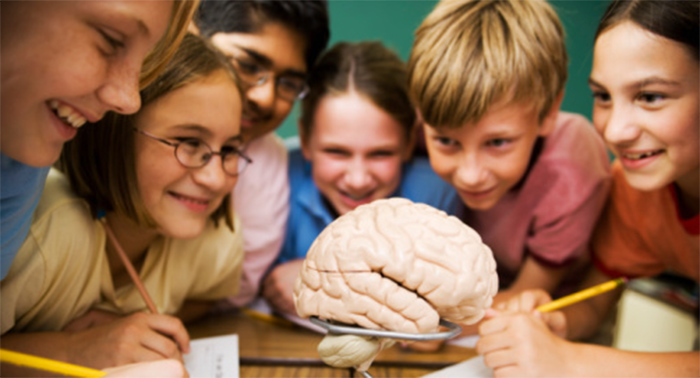As a teacher of both students and adults for many years, I have questioned whether or not our current educational system prepares young people well enough not only to survive in our ever changing society, but to make a positive impact in their own way. To do this there is no doubt that they need to be resilient to manage the many changes, pressures and demands of society. They need to be confident to stand up for what they believe in and to resist the pressures of ‘following’ if they do not want to. They need to be creative, independent thinkers who are emotionally intelligent and able to embrace challenges.
As a teacher, I have always believed that I have helped young people develop these skills and attitudes but on reflection, did I do enough to make a difference? Were my students always uppermost in my mind when I was planning and teaching? Or were they secondary to the academic results I wanted them to achieve? Then I discovered active learning which changed my thinking and transformed my approach to teaching and learning. It genuinely places the student and their learning process at the centre of all that we do as educators and has been proven to raise standards as I discovered in my last school.
Growth mindsets
Part of my mission now is to support teachers to become active learners themselves so they can model this for their students. In this pursuit, I have been greatly influenced by the research of Carol Dweck, Professor of Psychology at Stanford University, who coined the phrase, ‘Growth Mindset’. Her work on learning styles and attitudes identified personality traits that support young people in becoming reflective, resilient and independent learners. She defines a ‘growth mindset’ person as someone who believes that intelligence is cultivated through persistent learning, whereas a ‘fixed mindset’ person believes that intelligence is an inherited and ‘fixed’ trait and that not much can be done to change it. Dweck’s research has proven to be an incredibly powerful tool in education.
As we approach our own goals with a ‘growth mindset’ it is important that the culture of the school nurtures such a mindset. This is a huge discussion in itself. For example, do we recognise the power of celebrating mistakes as well as success? How do we use praise to encourage growth mindsets? What are the rules for giving wise praise?
The learning challenge
Teaching for challenge is undoubtedly an important aspect of developing resilient, confident and creative learners. I have been supported in my understanding of this by the work of author, teacher and trainer, James Nottingham, who created the ‘Learning Pit’ as a way to promote and enhance challenge in learning. He uses it to explain why more challenge leads to enhanced learning. It supports the teacher in planning and structuring their lessons and also develops a learning culture where students challenge themselves. Nottingham’s thinking uses the emerging research of Dweck and Hattie.
James Nottingham’s learning ‘pit’
The learning pit is based on the following principles:
- Students are more interested in learning when they are exposed to others around them who are curious and express uncertainty. They are confident enough to say, ‘I’m not sure, I don’t understand or I am confused. They use questions to question their learning and admit and learn from their mistakes.
- Learning is enhanced by students’ participation in guided enquiry.
- High quality learning moves learning from shallow to deep and profound levels to make connections and understand relationships between ideas. Nottingham believes that being in the pit compels us to make these links.
- As knowledge, understanding, skills and attitudes should be at the core of all teaching and learning and not dominated by the actual subject, we need to build in opportunities and time for making connections and the transfer of learning from one situation to another.
- Everyone participating in lessons (adults and young people) where the learning pit is used should be thoughtful, reflective, supportive and reasonable.
- It is important to acknowledge that it is the process of reflecting, thinking together and giving reasons that is at the heart of all learning and to accept that there is not always agreement about what is right. This is a useful learning process in itself.
The four stages of the learning pit provide a useful planning/structured model for teachers.
Stage 1-Concept
This is based on the premise that most students have a basic understanding of the concept.
Stage 2-Conflict
In this stage, the teacher creates a ‘cognitive conflict’ which involves at least two opinions in the students’ mind which may agree but both are in conflict with one another.
Stage 3-Construct
The teacher builds in opportunity in the lesson and reason so that the students can construct meaning for themselves.
Stage 4-Consider
The teacher builds in reflection time so that the students can reflect on how their thinking has been changed, adapted or constructed through the course of the lesson. It provides a framework to help structure metacognition.
For me, understanding the importance of developing growth mindsets and the principles and stages of the learning pit underpin my work on active learning. It helps to prepare young people for the challenges in life they are yet to face.
Dweck, C. (2012). Mindset: How You Can Fulfil Your Potential. London: Robinson.
Dweck, C. (2000). Self Theories: Their Role in Motivation, Personality, and Development. Hove: Psychology Press.
Nottingham, J. (2010). Challenge Learning. Berwick upon Tweed: JN Publishing.
Getting Started with Active Learning






